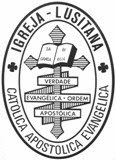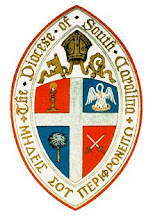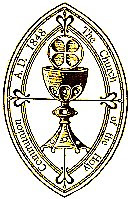5º Domingo da Quaresma, 29.03.09 [Ano B]
Igreja do Salvador do Mundo/ V.N. de Gaia
Cónego Dr. Francisco Carlos Zanger
«Que as palavras da minha boca e a meditação dos nossos corações, sejam agradáveis perante Ti Senhor, nossa Rocha e nosso Redentor; em nome do Pai, e do Filho, e do Espírito Santo». Ámen.
Finalmente, o último Domingo da Quaresma. Há um restaurante aonde nos comemos quase todos sextas-feiras, a proprietária ainda não lembra que eu não quero nem carne nem sobremesa nas sextas-feiras durante Quaresma... religiosa, ela não é.
A cultura mesma agora não é. Eu moro em Braga, a cidade mais Católica Romana do país, mas senti mau quando vi nas todas as igrejas lá, desde o começo da Quaresma, anúncios sobre as Procissões da Semana Santa... mas nada sobre a Quaresma mesma. A Câmara da Braga também tem publicidade sobre as Procissões, e não só em Braga mas em todo o Portugal e Espanha, também.
As Procissões são coisas boas, e as pessoas que participam, os farricocos e outros figurantes, são crentes, fieis, e se uma das Procissões muda a coração de somente uma pessoa para ser Cristão, vale a pena. Mas eu acho que a Câmara esta pensando menos nas almas e mais nos Euros das turistas, quando investem dinheiro em publicidade. É triste, mas espelha-se a cultura em que vivemos.
Estava pensando, esta semana passado, sobre Quaresma e a cultura. Estava pensando, também, sobre espelhos, porque eles não são todos iguais. Quaresma e a cultura: as duas são espelhos, mas espelhos bem diferentes, espelhos quem mostram-nos coisas diferentes. Dois espelhos, mas no primeiro, se olhamos nele cuidadosamente, e com fé e paciência, nós podemos ver as nossas essências verdadeiras, com todo o que é bom (e há muito que é bom: somos formados na semelhança de Deus) e com todo o que é mau (e há também muito—nós somos pecadores, quebrados). No espelho segundo, o espelho da cultura, a imagem é invertida e deformado, e a que mostra é mentira.
No Calendário Eclesiástico, as quarenta dias da Quaresma podem ser por nos um espelho, um espelho dado pela Igreja, que nós podemos usar para espreitar para dentro dos cantos mais escuros das nossas almas e mentes, um espelho para reflectir e apontar uma luz e limpar as teias da aranha, de desempoeirar o espírito, nos lugares dentro de nos em quem nós não queremos olhar. É um espelho que pode reflectir a luz até aos lugares mais escuros, mais cheia das trevas. É por isso que começamos a Quaresma com as palavras «Convido-vos, portanto, em nome da Igreja, a observar santa Quaresma, com exame de consciência...[1]».
O espelho da cultura é diferente. Se o espelho da Quaresma mostra-nos a verdade, o espelho da cultura reflecte o contrário. Quando eu veja televisão, não há diferenças grandes entre a publicidade aqui e nos Estados Unidos. É sempre o mesmo—se dirijais o carro perfeito, useis as cosméticas perfeitas, se bebeis a bebida perfeita que comprastes no supermercado perfeito, se laveis suas roupas perfeitas com a sabão perfeita... se compreis todas as coisas que estes companhias querem vender, vocês também podem aparecer-se perfeitas como as actores, podem ter vidas perfeitas e felizes, sem falhas nenhumas...
Isto é a Grande Mentira: que nós podemos aperfeiçoar-se. Que nós não precisamos de Cristo. Que nós podemos, se compramos isto, ou gastamos dinheiro naquela, ou adquirimos este ai, podemos der feliz, podemos se popular, podemos ter vidas contentes e alegres. Nunca precisamos de ficar sozinho ou assustado ou triste, nunca sentimos humilhação ou vergonha, nada mais de solidão ou de saudades... uma vida de beleza e perfeição, só para o preço, o preço mínimo, de nosso produto. E baseado no orgulho, este ideia que nós podemos ganhar, ou comprar, a nossa própria felicidade, e que não precisamos de ninguém, e sobretudo não precisamos de Deus. É orgulho, e pecado, e, sempre, uma mentira.
Era por orgulho, o pecado que é a raiz de todos os outros, que o Grande Mentiroso, o arcanjo Satanás[2], foi expulsado dos Céus. Esmagado, o Inimigo caiu dos Céus e ficou como senhor deste mundo. Perdeu seu poder como arcanjo, mas não sua voz tentador. Há nada que ele pode fazer contra nos... mas ele ainda tem a lingua dum sedutor; as mentiras para enganar nos.
Deus deu-nos livre-arbítrio. E com este livre-arbítrio, nós precisamos escolher entre as verdades de Deus e do seu Filho Unigênito, Jesus Cristo, e as mentiras do Inimigo. Mas de vez em quando, as verdades são duros, difíceis, e as mentiras tem mais poder de atracção.
Há muitas partes da Grande Mentira, da mentira do Diabo. Hoje não falo sobre as partes que glorificam violência, ou racismo, ou os outros que também tem suas raízes no orgulho. Só falará das partes quem ouvimos mais da cultura, da média... e a média é um instrumento maravilhoso para o Inimigo! Quem é que não quer ser linda, ou rico, ou “sexy”, ou popular... que não quer todos as coisas que eles vendem na televisão? A primeira parte da Grande Mentira é esta: estas pessoas são lindas, ou rico, ou “sexy”, ou popular, somente por causa dos produtos que usam. É o carro novo, ou a fragrância sensual, ou as roupas da moda... E se nós compramos as mesmas coisas, também podemos ser lindas, ou ricas, ou “sexy”, ou popular.
Na contracapa da revista Visão desta semana passada, tinha um foto grande do actor George Clooney, e dum relógio Omega, com as palavras (em Inglês) “George Clooney’s Choice” — a escolha do George Clooney. A mensagem é fácil a entender: se quer ser tão “sexy”, tão popular, de ter a vida feliz de George Clooney, só precisa escolher o mesmo relógio. Nós podemos ter “valor”, se compramos os produtos vendido nas revistas e televisão. Ai, é tão fácil, ser feliz!
Quando pensamos nisso, podemos ver como é uma estupideza. Um relógio pode dizer as horas, e nada mais. Não pode dar qualquer valor a uma pessoa: o nosso único valor verdadeiro é uma coisa interior—a mais que conformamos ao Imagem do Deus, a mais valor que temos.
Mas a primeira parte desta Grande Mentira é que nosso valor é uma coisa exterior, a segunda parte (e isto é esquisito!) é até pior. A primeira parte diz que nos estamos sem valor se não compramos estes produtos, mas a segunda parte é o oposto: que nós já somos perfeitos. E a Mentira é tão talentoso que, se não olhamos bem, se não examinamos as mentiras cuidadosamente mesmo, nem percebemos que os duas coisas são opostas.
Ouçam a publicidade comum: “Hoje, você merece uma pausa!”, declara McDonalds. Uma nova promoção parceria entre duas companhias: “Você Merece Coca-Cola e Avon!” Ou a minha favorita, da companhia L’Oreal, que nós ensina simplesmente: “Porque você merece!”.
“Porque você merece!”??? Nós merecemos o que? Nos, que vivam num mundo aonde há uns quem jogam fora mais comida do que comem, ao mesmo tempo que há tanto quem nem podem por pão na mesa por suas crianças... nos, que vivam num mundo aonde um medico seria melhor pagado fazendo lipoaspiração nos ricos do que tratando as doenças tropicais quem matam milhões... Nos, quem “matas os profetas e apedrejas os mensageiros que Deus nos envia”?[3] O que é que nós “merecemos”???
É por isso que precisamos da Quaresma. Nós ouvimos as mensagens da cultura dia inteiro. É por isso que a Quaresma é um dom da Igreja, um tempo que, cada ano, dá nós a possibilidade duma interrupção transitória em nossas vidas. Este tempo de jejum e da renúncia não é para nós punir, mas para dá-nos um pouco de espaço, espaço fora do mundo a da sua cultura tão barulhenta, em que nós podemos examinar as nossas almas e mentes: para ver como as influencias malignas das mentiras do Inimigo já podiam acumular nos cantos mais escuros, e para convidar a Luz de Cristo ilumina as trevas. Para convidar a Luz, e eliminar as mentiras, quer que somos sem valor quer que merecemos tudo que queremos.
Nós temos valor, sem comprar nada, porque foram feiro por Deus no seu próprio Imagem, e nós merecemos nada, por causa dos nossos pecados. O nosso valor é tanto que Deus ainda nos ama, apesar de todos nosso pecados. E com todos nosso pecados, nós merecemos nada, sem o amor de Deus.
No Evangelho, Jesus disse, «”Neste momento, o meu coração está perturbado. Mas que posso fazer? Pedir ao Pai que me livre do que está para me acontecer nesta hora? Mas eu vim ao mundo precisamente por causa desta hora! Pai, manifesta o teu poder!” Veio então uma voz do céu que dizia: “Já o manifestei e voltarei ainda a manifestá-lo”.[4]»
“Já o manifestei...”. Esta quinta-feira passada, o dia 25 de Março, foi a verdadeira ‘Festa de Encarnação’: a Anunciação à Virgem Maria. Foi a Encarnação, porque foi neste momento que “a Palavra fez-se homem e habitou nós[5]”. É incrível... que Deus, o Criador do Universo inteiro, inicialmente habitou entre nós como um embriãozinho, no seio da Virgem, e nasceu normalmente como verdadeiro homem, mas também foi verdadeiro Deus! E não só nasceu como um de nós, mas também morreu, horrivelmente na Cruz, só pelo amor de nós, que somos tão pecaminoso que, sem o amor de Deus, devem ser perdidos.
‘Já o manifestei, e voltarei ainda a manifestá-lo’. Jesus disse que “chegou o momento em que este mundo vai ser julgado, e que o senhor deste mundo vai ser expulso”. Jesus, no Evangelho de S. Mateus, deu nós uma descrição pormenorizado do Juízo Final[6], e apesar de todas as mentiras do Inimigo, não somos julgados pelos nossos roupas de moda, ou carros novos, ou qualquer coisa assim. Também, não seria que o Juiz dirá: “Você merece o Reino dos Céus!”: o Cristo não é Coca-Cola! Não, se a Grande Mentira é isso: você é a coisa mais importante, ama-te mesmo, a verdade é diferente: “Ama o Senhor teu Deus com todo o teu coração, e tua alma, e tua mente, e ama o teu próximo como a ti mesmo.”
Dois espelhos. O da cultura reflecte que nós merecemos todo que queremos, e que só precisamos de gastar dinheiro para aperfeiçoar-se. O da Quaresma, o da Fé, reflecte a Imagem do Deus. No primeiro, é o espelho que é estragada, a mostra a mentira que somos perfeitos. No segundo, é nós que somos estragados, desfiguradas por pecado, que precisamos a Salvação de Cristo Jesus. Duas reflexões. Uma verdade.
Nesta Quaresma, escolhamos a verdade. Nesta Quaresma, olhemos no espelho, reconheçamos os nossos imperfeições, nossos pecados, e deixemos que a Luz brilha nas trevas, porque se deixamos, as trevas, e as mentiras, não podem vencer[7].
Em nome do Pai, e do Filho, e do Espírito Santo. Ámen.
[1] Liturgia da Igreja Lusitana, p.142
[2] Apocalipse 12 7-9
[3] S. Mateus 23, 37
[4] S. João 12, 27-28
[5] S. João 1, 14
[6] S. Mateus 25, 31-46 (e seria bom, consultar mais uma vez!)
[7] S. João 1,5
Igreja do Salvador do Mundo/ V.N. de Gaia
Cónego Dr. Francisco Carlos Zanger
«Que as palavras da minha boca e a meditação dos nossos corações, sejam agradáveis perante Ti Senhor, nossa Rocha e nosso Redentor; em nome do Pai, e do Filho, e do Espírito Santo». Ámen.
Finalmente, o último Domingo da Quaresma. Há um restaurante aonde nos comemos quase todos sextas-feiras, a proprietária ainda não lembra que eu não quero nem carne nem sobremesa nas sextas-feiras durante Quaresma... religiosa, ela não é.
A cultura mesma agora não é. Eu moro em Braga, a cidade mais Católica Romana do país, mas senti mau quando vi nas todas as igrejas lá, desde o começo da Quaresma, anúncios sobre as Procissões da Semana Santa... mas nada sobre a Quaresma mesma. A Câmara da Braga também tem publicidade sobre as Procissões, e não só em Braga mas em todo o Portugal e Espanha, também.
As Procissões são coisas boas, e as pessoas que participam, os farricocos e outros figurantes, são crentes, fieis, e se uma das Procissões muda a coração de somente uma pessoa para ser Cristão, vale a pena. Mas eu acho que a Câmara esta pensando menos nas almas e mais nos Euros das turistas, quando investem dinheiro em publicidade. É triste, mas espelha-se a cultura em que vivemos.
Estava pensando, esta semana passado, sobre Quaresma e a cultura. Estava pensando, também, sobre espelhos, porque eles não são todos iguais. Quaresma e a cultura: as duas são espelhos, mas espelhos bem diferentes, espelhos quem mostram-nos coisas diferentes. Dois espelhos, mas no primeiro, se olhamos nele cuidadosamente, e com fé e paciência, nós podemos ver as nossas essências verdadeiras, com todo o que é bom (e há muito que é bom: somos formados na semelhança de Deus) e com todo o que é mau (e há também muito—nós somos pecadores, quebrados). No espelho segundo, o espelho da cultura, a imagem é invertida e deformado, e a que mostra é mentira.
No Calendário Eclesiástico, as quarenta dias da Quaresma podem ser por nos um espelho, um espelho dado pela Igreja, que nós podemos usar para espreitar para dentro dos cantos mais escuros das nossas almas e mentes, um espelho para reflectir e apontar uma luz e limpar as teias da aranha, de desempoeirar o espírito, nos lugares dentro de nos em quem nós não queremos olhar. É um espelho que pode reflectir a luz até aos lugares mais escuros, mais cheia das trevas. É por isso que começamos a Quaresma com as palavras «Convido-vos, portanto, em nome da Igreja, a observar santa Quaresma, com exame de consciência...[1]».
O espelho da cultura é diferente. Se o espelho da Quaresma mostra-nos a verdade, o espelho da cultura reflecte o contrário. Quando eu veja televisão, não há diferenças grandes entre a publicidade aqui e nos Estados Unidos. É sempre o mesmo—se dirijais o carro perfeito, useis as cosméticas perfeitas, se bebeis a bebida perfeita que comprastes no supermercado perfeito, se laveis suas roupas perfeitas com a sabão perfeita... se compreis todas as coisas que estes companhias querem vender, vocês também podem aparecer-se perfeitas como as actores, podem ter vidas perfeitas e felizes, sem falhas nenhumas...
Isto é a Grande Mentira: que nós podemos aperfeiçoar-se. Que nós não precisamos de Cristo. Que nós podemos, se compramos isto, ou gastamos dinheiro naquela, ou adquirimos este ai, podemos der feliz, podemos se popular, podemos ter vidas contentes e alegres. Nunca precisamos de ficar sozinho ou assustado ou triste, nunca sentimos humilhação ou vergonha, nada mais de solidão ou de saudades... uma vida de beleza e perfeição, só para o preço, o preço mínimo, de nosso produto. E baseado no orgulho, este ideia que nós podemos ganhar, ou comprar, a nossa própria felicidade, e que não precisamos de ninguém, e sobretudo não precisamos de Deus. É orgulho, e pecado, e, sempre, uma mentira.
Era por orgulho, o pecado que é a raiz de todos os outros, que o Grande Mentiroso, o arcanjo Satanás[2], foi expulsado dos Céus. Esmagado, o Inimigo caiu dos Céus e ficou como senhor deste mundo. Perdeu seu poder como arcanjo, mas não sua voz tentador. Há nada que ele pode fazer contra nos... mas ele ainda tem a lingua dum sedutor; as mentiras para enganar nos.
Deus deu-nos livre-arbítrio. E com este livre-arbítrio, nós precisamos escolher entre as verdades de Deus e do seu Filho Unigênito, Jesus Cristo, e as mentiras do Inimigo. Mas de vez em quando, as verdades são duros, difíceis, e as mentiras tem mais poder de atracção.
Há muitas partes da Grande Mentira, da mentira do Diabo. Hoje não falo sobre as partes que glorificam violência, ou racismo, ou os outros que também tem suas raízes no orgulho. Só falará das partes quem ouvimos mais da cultura, da média... e a média é um instrumento maravilhoso para o Inimigo! Quem é que não quer ser linda, ou rico, ou “sexy”, ou popular... que não quer todos as coisas que eles vendem na televisão? A primeira parte da Grande Mentira é esta: estas pessoas são lindas, ou rico, ou “sexy”, ou popular, somente por causa dos produtos que usam. É o carro novo, ou a fragrância sensual, ou as roupas da moda... E se nós compramos as mesmas coisas, também podemos ser lindas, ou ricas, ou “sexy”, ou popular.
Na contracapa da revista Visão desta semana passada, tinha um foto grande do actor George Clooney, e dum relógio Omega, com as palavras (em Inglês) “George Clooney’s Choice” — a escolha do George Clooney. A mensagem é fácil a entender: se quer ser tão “sexy”, tão popular, de ter a vida feliz de George Clooney, só precisa escolher o mesmo relógio. Nós podemos ter “valor”, se compramos os produtos vendido nas revistas e televisão. Ai, é tão fácil, ser feliz!
Quando pensamos nisso, podemos ver como é uma estupideza. Um relógio pode dizer as horas, e nada mais. Não pode dar qualquer valor a uma pessoa: o nosso único valor verdadeiro é uma coisa interior—a mais que conformamos ao Imagem do Deus, a mais valor que temos.
Mas a primeira parte desta Grande Mentira é que nosso valor é uma coisa exterior, a segunda parte (e isto é esquisito!) é até pior. A primeira parte diz que nos estamos sem valor se não compramos estes produtos, mas a segunda parte é o oposto: que nós já somos perfeitos. E a Mentira é tão talentoso que, se não olhamos bem, se não examinamos as mentiras cuidadosamente mesmo, nem percebemos que os duas coisas são opostas.
Ouçam a publicidade comum: “Hoje, você merece uma pausa!”, declara McDonalds. Uma nova promoção parceria entre duas companhias: “Você Merece Coca-Cola e Avon!” Ou a minha favorita, da companhia L’Oreal, que nós ensina simplesmente: “Porque você merece!”.
“Porque você merece!”??? Nós merecemos o que? Nos, que vivam num mundo aonde há uns quem jogam fora mais comida do que comem, ao mesmo tempo que há tanto quem nem podem por pão na mesa por suas crianças... nos, que vivam num mundo aonde um medico seria melhor pagado fazendo lipoaspiração nos ricos do que tratando as doenças tropicais quem matam milhões... Nos, quem “matas os profetas e apedrejas os mensageiros que Deus nos envia”?[3] O que é que nós “merecemos”???
É por isso que precisamos da Quaresma. Nós ouvimos as mensagens da cultura dia inteiro. É por isso que a Quaresma é um dom da Igreja, um tempo que, cada ano, dá nós a possibilidade duma interrupção transitória em nossas vidas. Este tempo de jejum e da renúncia não é para nós punir, mas para dá-nos um pouco de espaço, espaço fora do mundo a da sua cultura tão barulhenta, em que nós podemos examinar as nossas almas e mentes: para ver como as influencias malignas das mentiras do Inimigo já podiam acumular nos cantos mais escuros, e para convidar a Luz de Cristo ilumina as trevas. Para convidar a Luz, e eliminar as mentiras, quer que somos sem valor quer que merecemos tudo que queremos.
Nós temos valor, sem comprar nada, porque foram feiro por Deus no seu próprio Imagem, e nós merecemos nada, por causa dos nossos pecados. O nosso valor é tanto que Deus ainda nos ama, apesar de todos nosso pecados. E com todos nosso pecados, nós merecemos nada, sem o amor de Deus.
No Evangelho, Jesus disse, «”Neste momento, o meu coração está perturbado. Mas que posso fazer? Pedir ao Pai que me livre do que está para me acontecer nesta hora? Mas eu vim ao mundo precisamente por causa desta hora! Pai, manifesta o teu poder!” Veio então uma voz do céu que dizia: “Já o manifestei e voltarei ainda a manifestá-lo”.[4]»
“Já o manifestei...”. Esta quinta-feira passada, o dia 25 de Março, foi a verdadeira ‘Festa de Encarnação’: a Anunciação à Virgem Maria. Foi a Encarnação, porque foi neste momento que “a Palavra fez-se homem e habitou nós[5]”. É incrível... que Deus, o Criador do Universo inteiro, inicialmente habitou entre nós como um embriãozinho, no seio da Virgem, e nasceu normalmente como verdadeiro homem, mas também foi verdadeiro Deus! E não só nasceu como um de nós, mas também morreu, horrivelmente na Cruz, só pelo amor de nós, que somos tão pecaminoso que, sem o amor de Deus, devem ser perdidos.
‘Já o manifestei, e voltarei ainda a manifestá-lo’. Jesus disse que “chegou o momento em que este mundo vai ser julgado, e que o senhor deste mundo vai ser expulso”. Jesus, no Evangelho de S. Mateus, deu nós uma descrição pormenorizado do Juízo Final[6], e apesar de todas as mentiras do Inimigo, não somos julgados pelos nossos roupas de moda, ou carros novos, ou qualquer coisa assim. Também, não seria que o Juiz dirá: “Você merece o Reino dos Céus!”: o Cristo não é Coca-Cola! Não, se a Grande Mentira é isso: você é a coisa mais importante, ama-te mesmo, a verdade é diferente: “Ama o Senhor teu Deus com todo o teu coração, e tua alma, e tua mente, e ama o teu próximo como a ti mesmo.”
Dois espelhos. O da cultura reflecte que nós merecemos todo que queremos, e que só precisamos de gastar dinheiro para aperfeiçoar-se. O da Quaresma, o da Fé, reflecte a Imagem do Deus. No primeiro, é o espelho que é estragada, a mostra a mentira que somos perfeitos. No segundo, é nós que somos estragados, desfiguradas por pecado, que precisamos a Salvação de Cristo Jesus. Duas reflexões. Uma verdade.
Nesta Quaresma, escolhamos a verdade. Nesta Quaresma, olhemos no espelho, reconheçamos os nossos imperfeições, nossos pecados, e deixemos que a Luz brilha nas trevas, porque se deixamos, as trevas, e as mentiras, não podem vencer[7].
Em nome do Pai, e do Filho, e do Espírito Santo. Ámen.
[1] Liturgia da Igreja Lusitana, p.142
[2] Apocalipse 12 7-9
[3] S. Mateus 23, 37
[4] S. João 12, 27-28
[5] S. João 1, 14
[6] S. Mateus 25, 31-46 (e seria bom, consultar mais uma vez!)
[7] S. João 1,5









